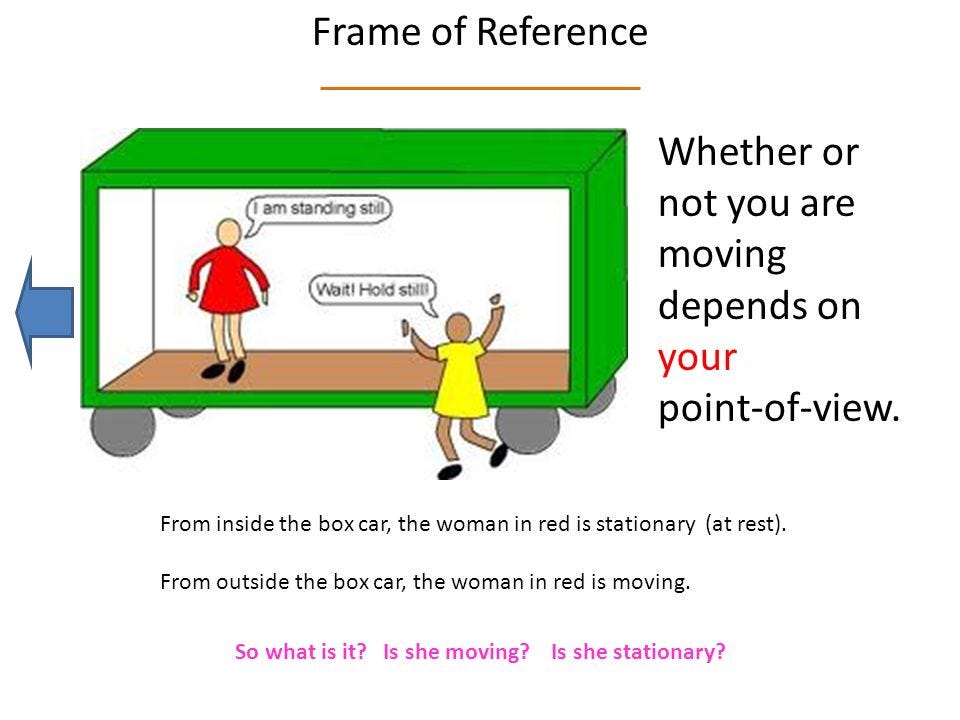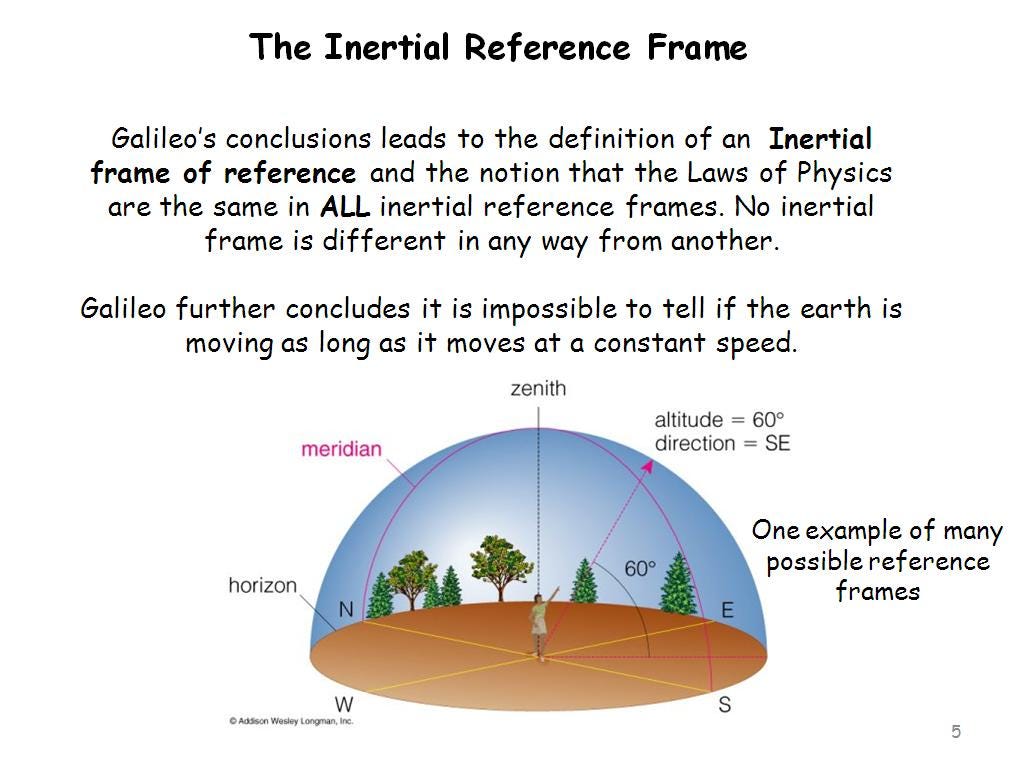Inertial reference frames
Seeing things from a more neutral point of view allows for a better understanding
I have very fond memories about my high school maths and physics teacher. He is the one responsible for my love for science and the first who tried to teach me how to use my own brain and think freely.
He stressed the subject of inertial frames of reference, a kind of “independent observation point”, quite a lot. Think of when your sitting in a train and the train next to you moves: you have the impression that the train you’re on is moving. From the inertial reference frame of the guy on the platform, it is clear which train is moving. My high school teacher loved to bring up Galileo’s struggle to convince his contemporaries that the Earth was revolving around the Sun, not the opposite, as most believed at those times.
My physics teacher argued that they were actually both right, both points of view had their own reasons based on physics if you observed them from the correct inertial reference frame.

From our point of view (or reference frame) on the Earth, we do see the Sun revolving around us. Galileo urged us to imagine ourselves sitting on the Sun: we would have seen the Earth and all the other planets revolving around us. His was certainly a far better reference frame but not quite an inertial one (think of it as not completely independent).
According to physics, the Earth and the Sun both rotate around the center of gravity of the system they form; all the planets and the Sun (!) revolve around the center of gravity of the entire Solar System. To be more precise, the Sun’s and the planet’s centers of gravity revolve around the Solar System’s center of gravity.
The point is that the Sun is by far the biggest mass of the Solar System: it means that the Solar System’s center of gravity lies really close to the Sun’s own center of gravity. Therefore the Sun’s center of gravity revolves along a very tiny orbit around the Solar System’s center of gravity. This orbit is obviously well inside the Sun’s core and it is not easy to estimate how the Sun wobbles around this center of gravity of the whole Solar System.

Ok, practically, the Earth and the planets revolve around the Sun, but it actually means around a point that is really close to the center of the Sun. But when we do calculations for satellites and spaceships we need to take into account the fact that the orbits are not centered in the middle of the bigger planet. It is important. It actually matters. The Moon and the Earth form a system and they also revolve around a point that is very close the the Earth’s center. Two stars of similar mass in a binary system revolve around the center of gravity of the binary system, which is roughly at half their mutual distance.
Some are trying to see one of the most debated science topics of today from an inertial reference frame: Global Warming. Scientific data at our disposal prove that the Earth is indeed going through a warmer period. I am a geologist and during my university training I learned that Earth’s climate changes during its billion years of history had been affected by a lot of factors, that can be astronomical and geological, among others. That complex interaction of factors is the reason why glacial and interglacial periods have been alternating (in geology a glacial period is when the polar zones have ice caps).
The last few years of Earth history we call Holocene have witnessed far bigger climate changes than the one we are fearing now – look at this graph:

The big blue blob at the left is the the last ice age that ended around 10000 years ago. After that, the Earth’s average temperature has been fluctuating around 15°C. There are 5 major warmer periods before the one we are living in, which appears to be the smallest (Modern Warm Period).
The graph clearly shows that during human history the warm periods coincided with human development periods like the Iron Age, the Bronze Age, the Roman Empire, the Maya culture and our modern technological society: that’s why they are called “Optima”. The thing is they have been characterized by noticeably higher temperatures and higher sea levels than those feared about the current global warming. Think about it: some warmer periods of the past have been warmer and longer than the one we worry about today, and humans were not even using the modern, polluting comforts!
The modern warm period we are living in is real. Temperatures are rising but looking at the graph, observing from an inertial reference frame, we cannot say if the warming will continue or if it is about to end (as pictured in this graph) to a transition towards an ice age (of course not during a single human generation).
We might well be at the top of a current Optimum (whose warmer temperatures are scaring us) that is actually going to recede towards a so called “processional cross” (the beginning of a mini ice age).
From a different point of view, the more inertial reference frame of geological time, human life is less than a blink of an eye. Data show that during Holocene Earth’s temperatures have been generally decreasing (the decrease during geological time is clear, but it was actually made of several alternating highs and low in a decreasing general trend). Those who were living during the highs – like us today – actually experienced global warmings and were forced to adapt to them:
Therefore, no climate change denial here, nor human contribution denial. Climate change is normal during Earth’s history, much like earthquakes and volcanic eruptions: we have to cope with them. Some argue that whether the current warmer period is caused – or just contributed - by humans, should not be our primary concern (though it should still remain a concern). The latest abrupt temperature rise coincides with the onset of the industrial revolution, a time when we began burning fossil fuels for energy and heating. But from the more inertial reference frame of the Modern Warm Period, it is almost invisible: it dissolves in the general temperature “high” shown in the graph. Certainly it is a problem: cars and heating systems emissions do pollute the air of our cities and contribute greenhouse gases to the atmosphere (agricolture and farming do it even more). Completely electrical car engines and renewable energy would remove city air pollution but the process of producing electric cars has the same global impact than producing a conventional one.
The thing is that the Earth may probably keep on warming for its own reasons for the next human generations, no matter what we do. We may be unable to stop it. The humans that preceded us – those who have been living during the Climate Optima – were forced to adapt, migrating to cooler areas, abandoning cities and building new ones. Of course it is not easy and maybe it is even less so for our modern societies (try imagine abandoning New York and rebuild it somewhere else!). Anyway, for those reasons some argue that we should invest in adapting to rising temperatures and sea levels rather than trying to stop them from rising: there is a chance we will not be able to do it.
Disclaimer:
I am a geologist. My specialty is tectonics, I dealt with crustal deformation in the solid part of the Earth. I have no direct work experience with the non-solid Earth, such as atmosphere and climate. Therefore I cannot express my own hands-on opinion about such topics. Nevertheless, the subject is still part of the Earth Sciences, and it is basic training for geologists; that’s why I’m inclined to look at it from a scientific perspective. But I feel compelled to point out that I’m just describing some scientific facts other researchers have worked on, with the goal of describing different points of views (meaning observation systems, not opinions) from which to look at a problem. Sometimes you get a better view by distancing yourself from your personal opinions and fears.

